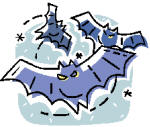 |
|||||||||||||||
|
|
|
|
|||||||||||||
|
EIGHTEENTH CENTURY VAMPIRE CONTROVERSY
by Beverley Richardson
Today everyone is familiar with vampires, but in Britain very little was known of vampires prior to the 18th century. What brought the vampire to the attention of the general public? During the 18th century there was a major vampire scare in Eastern Europe. Even government officials frequently got dragged into the hunting and staking of vampires.
This controversy was directly responsible for England's current vampire myths. In fact, the word Vampire only came into English language in 1732 via an English translation of a German report of the much publicized Arnold Paole vampire staking in Serbia.
Western scholars seriously considered the existence of vampires for the first time rather than just brushing them off as superstition. It all started with an outbreak of vampire attacks in East Prussia in 1721 and in the Austro-Hungarian empire from 1725-1734.
Two famous cases involved Peter Plogojowitz and Arnold Paole. Plogojowitz died at the age of 62, but came back a couple of times after his death asking his son for food. When the son refused, he was found dead the next day. Soon Plogojowitz returned and attacked some neighbours who died from loss of blood.
In the other famous case Arnold Paole, an ex-soldier turned farmer who had been attacked by a vampire years before, died while haying. After death people began to die and it was believed by everyone that Paole had returned to prey on the neighbours.
These two incidents were extremely well documented. Government officials examined the cases and the bodies, wrote them up in reports, and books were published afterwards of the Paole case and distributed around Europe. The controversy raged for a generation. The problem was exacerbated by rural people having an epidemic of vampire attacks and digging up bodies all over the place. Many scholars said vampires didn't exist - they attributed reports to premature burial, or rabies which causes thirst.
However, Dom Augustine Calmet, a well respected French theologian and scholar, put together a carefully thought out treatise in 1746 which said vampires did exist. This had considerable influence on other scholars at the time.
Eventually, Austrian Empress Marie Theresa sent her personal physician to investigate. He said vampires didn't exist and the Empress passed laws prohibiting the opening of graves and desecration of bodies. This was the end of the vampire epidemics. But by then everyone knew about vampires and it was only a matter of time before authors would preserve and mould the vampire into something new and much more accessible to the general public.
SLAVIC VAMPIRES
ROMANIA
GYPSIES AND VAMPIRES
|
|||||||||||||||
|
|||||||||||||||

